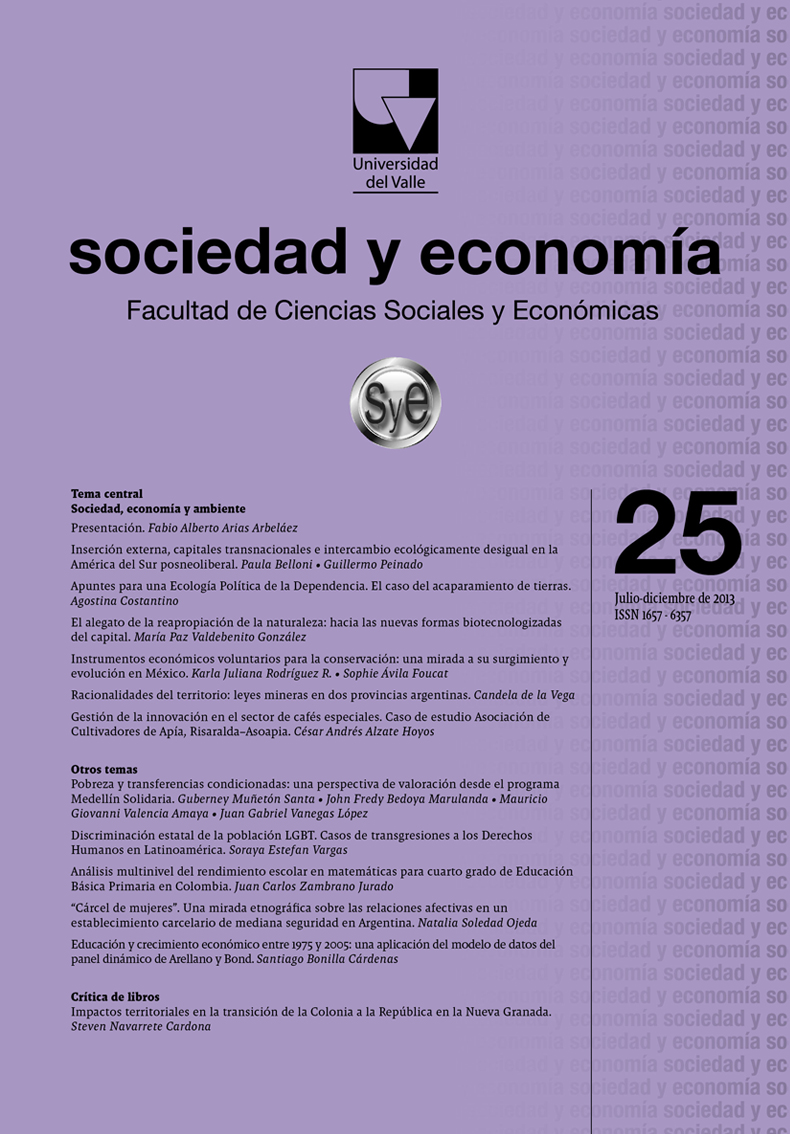Education and economic growth between 1975 and 2005: an application of the dynamic panel data model of Arellano and Bond
Main Article Content
The main goal of this paper is to test the hypothesis of some economic growth theories,according to which human capital accumulation affects positively a country’s rate ofeconomic growth. Using average years of schooling as a proxy for human capital and Arellanoand Bond´s (1991) methodology, the study is conducted on a panel of 62 countries,between the years 1975 and 2005. It is found that the total of average years of schooling,as well as the level of structural development and investment effort of a country, aresignificant in order to explain the rate of economic growth.
- Human Capital
- Education
- Economic Growth
- Arellano-Bond
Bonilla Cárdenas, S. (2013). Education and economic growth between 1975 and 2005: an application of the dynamic panel data model of Arellano and Bond. Sociedad Y Economía, (25), 255–273. https://doi.org/10.25100/sye.v0i25.3972
Downloads
Download data is not yet available.

This work is licensed under a Creative Commons Attribution-NonCommercial 4.0 International License.
Revista sociedad y economía editada por la Facultad de Ciencias Sociales y Económicas de la Universidad del Valle se encuentra bajo una Licencia Internacional Creative Commons Atribución - No comercial 4.0
Basada en una obra en http://sociedadyeconomia.univalle.edu.co





